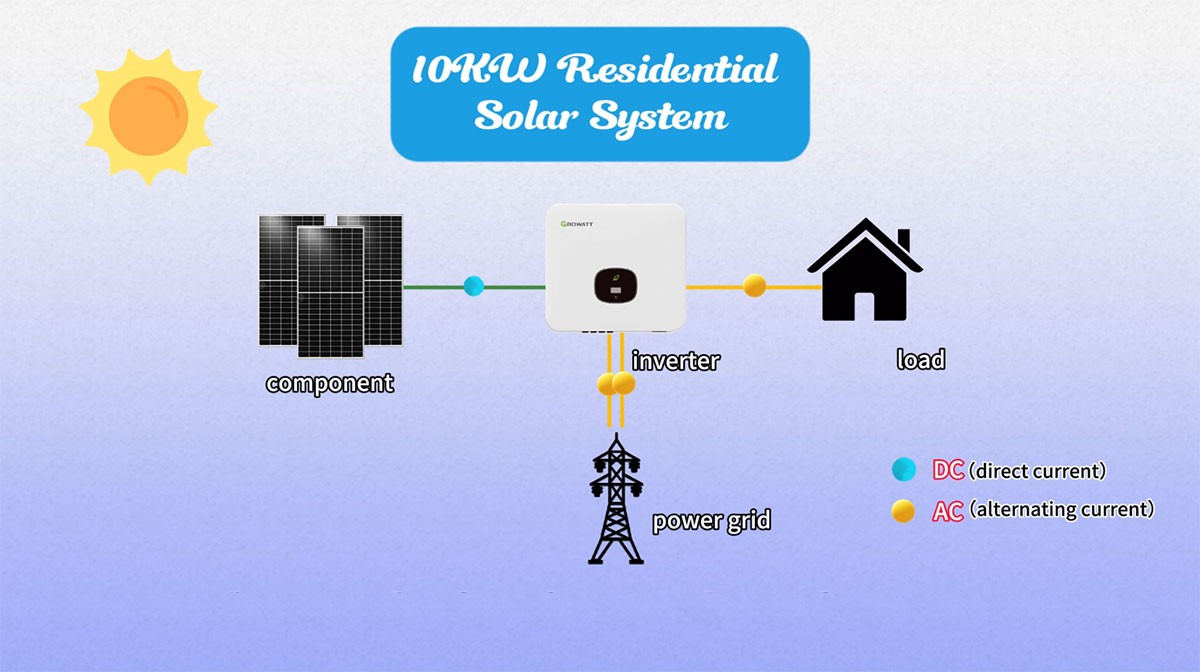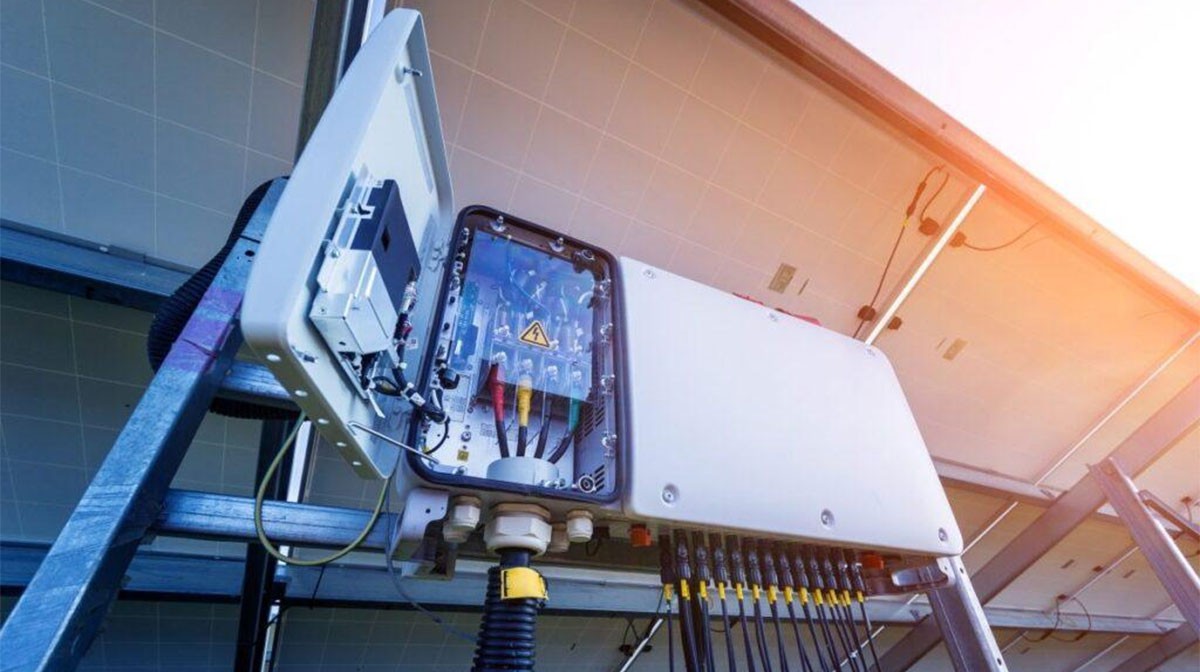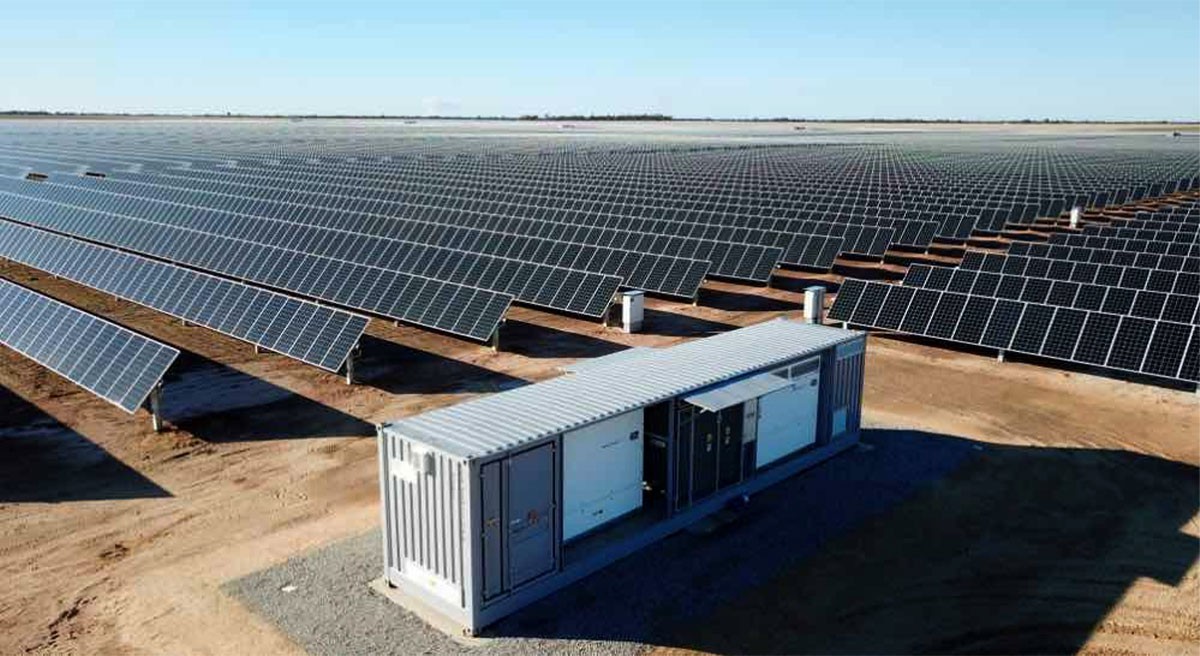The Role Of Inverters In PV Systems
In the wave of global energy transformation, solar PV power generation has become an important force with its clean and renewable characteristics. In PV systems, although the inverter seems inconspicuous, it plays a vital role and can be called the "heart" and "brain" of the entire system. It not only realizes the key power conversion, but also undertakes multiple functions such as system regulation and safety assurance, which profoundly affects the power generation efficiency, stability and economy of PV systems.
1. Power conversion: a bridge from DC to AC
Solar panels convert light energy into direct current (DC) through the photoelectric effect, but whether it is connected to the power grid or driving daily appliances, it needs to use alternating current (AC).
The most basic and core function of the inverter is to convert the DC generated by the solar panel into AC that meets the requirements.
Take the home PV system as an example. The solar panels on the roof continuously output DC during the day. A string inverter with a rated power of 5kW uses internal power electronic devices (such as insulated gate bipolar transistors IGBT) to convert DC power into sinusoidal AC power with a frequency of 50Hz and a voltage of 220V (or 380V) through high-frequency switching. This AC power can be directly used by refrigerators, air conditioners, TVs and other appliances in the home, and the excess power can be connected to the power grid to achieve "self-generation for self-use and surplus power for the grid".

In large-scale ground PV power stations, the scale of power conversion of centralized inverters is even more amazing. For example, at a megawatt-level PV base in western China, a single centralized inverter with a capacity of 1MW can convert millions of watts of DC power into AC power every hour, which is equivalent to meeting the electricity needs of thousands of households. These inverters use complex topological structures and control algorithms to ensure that the output AC power has an extremely low harmonic distortion rate (usually less than 5%), meeting the strict power quality requirements of the power grid and avoiding pollution to the grid.
2. Maximum Power Point Tracking (MPPT): Exploring the Power Generation Potential of Solar Panels
The light intensity, temperature, dust coverage and other factors will cause the output power of solar panels to change all the time, and the maximum power point tracking (MPPT) function of the inverter can adjust the working point of the solar panel in real time so that it always outputs the maximum power.
Assume that the maximum power of a solar panel under standard test conditions (STC, irradiance 1000W/m², temperature 25℃) is 500W, but in actual operation, weak light in the early morning, high temperature at noon, and cloud cover in the afternoon will cause the output power of the solar panel to fluctuate.
At this time, the inverter equipped with advanced MPPT algorithms (such as perturbation observation method and conductance increment method) will continuously change the working voltage and current of the solar panel, and accurately lock the maximum power point through a fast "test-feedback-adjustment" cycle.
According to statistics, inverters with efficient MPPT function can increase the overall power generation efficiency of PV systems by 5% - 15%.

In distributed PV scenarios, the advantages of the MPPT function are more obvious. For example, in a rooftop PV system of a residential building, the output characteristics of panels in different strings vary greatly because some panels are blocked by leaves and covered by building shadows. String inverters or micro inverters are equipped with independent MPPT modules for each string or each panel, which can optimize the power generation efficiency of each part separately, avoid the "short board effect", and maximize the power generation of the entire system.
3. System protection: ensuring safe and stable operation
The PV system is exposed to the outdoors for a long time and faces various risks such as grid anomalies, equipment failures, and natural environment. The protection function of the inverter is like a "safety guard" to ensure the stable operation of the system.
(1) Island effect protection
When the power grid is out of power due to a fault, if the PV system continues to supply power to the local power grid, an "island" will be formed, which will not only cause electric shock hazards to maintenance personnel, but also damage equipment. The island protection device built into the inverter can quickly detect abnormal changes in frequency, voltage and other parameters at the moment of power outage, and cut off the output within 2 seconds to avoid the island effect.
For example, when a typhoon caused the power grid in a certain area to be paralyzed, the local PV system inverter connected to the power grid promptly activated the island protection, effectively ensuring the safety of the repair personnel and the integrity of the equipment.
(2) Overvoltage, overcurrent and short-circuit protection
When the output voltage of the solar panel is too high (such as a voltage surge due to a sudden drop in temperature), a short-circuit fault occurs in the circuit, or the load current is too large, the inverter will automatically trigger the protection mechanism to cut off the circuit or limit the current to prevent equipment damage and fire accidents. At the same time, the inverter also has an over-temperature protection function. When the temperature of the internal power device is too high, it cools down by starting the cooling fan, reducing the output power, etc., to ensure that the equipment operates within a safe temperature range.

4. Grid interaction: achieving stable grid connection and intelligent regulation
With the continuous increase in PV installed capacity, the role of inverters in grid interaction is becoming increasingly important. It not only needs to smoothly integrate electric energy into the grid, but also needs to meet the grid's requirements for power quality, stability and regulation capabilities.
(1) Power quality optimization
The inverter controls the waveform and phase of the output current so that the output AC power is in the same frequency and phase as the grid voltage, and controls the harmonic content to an extremely low level. For example, modern smart inverters can control the current harmonic distortion rate (THD) within 3%, close to the ideal sine wave, reduce interference to the grid, and ensure stable operation of the grid. In addition, the inverter can also adjust the power factor according to the grid demand to make it close to 1, thereby improving the transmission efficiency of the grid.
(2) Intelligent regulation and grid support
Driven by the globalization of green electricity, PV systems have gradually transformed from simple power generation units to intelligent nodes with grid support capabilities. New inverters support functions such as active power regulation and reactive power compensation. When the grid load is peak, the inverter can actively reduce the output power to avoid impact on the grid; when the grid voltage is low, the inverter can output reactive power to increase the grid voltage level. In Germany, the inverters of some PV power stations have realized the function of "virtual power plant" through real-time communication with the power grid dispatching center, effectively participated in the peak load regulation of the power grid, and improved the absorption capacity of new energy.

5. Data monitoring and operation and maintenance management: improving the intelligence level of the system
Modern inverters generally integrate data collection, communication and intelligent analysis functions, becoming the "intelligent housekeeper" of the PV system. Through built-in sensors, the inverter monitors the DC input voltage, current, AC output power, frequency, equipment temperature and other parameters in real time, and uploads the data to the monitoring platform through wired (RS485, Ethernet) or wireless (4G, WiFi) communication.
Operation and maintenance personnel can remotely view the operating status, power generation data and fault alarm information of the PV system through mobile phone APP or computer. For example, when the power generation of a certain panel decreases due to dust accumulation, the inverter will issue an alarm in time, and locate the problem panel through data analysis, helping operation and maintenance personnel to accurately repair and reduce operation and maintenance costs. In addition, some advanced inverters also have predictive maintenance functions. Through machine learning analysis of historical data, the risk of equipment failure can be predicted in advance, turning passive maintenance into active maintenance.
In summary, the inverter integrates multiple functions such as power conversion, power optimization, safety protection, grid interaction and intelligent management in the PV system. Its performance directly determines the power generation efficiency, stability and economic benefits of the PV system. With the continuous advancement of technology, new technologies such as silicon carbide devices, AI algorithms, and multi-energy fusion will further improve the performance of inverters, promote the PV industry to develop in a more efficient and intelligent direction, and contribute more to the global energy transformation.

